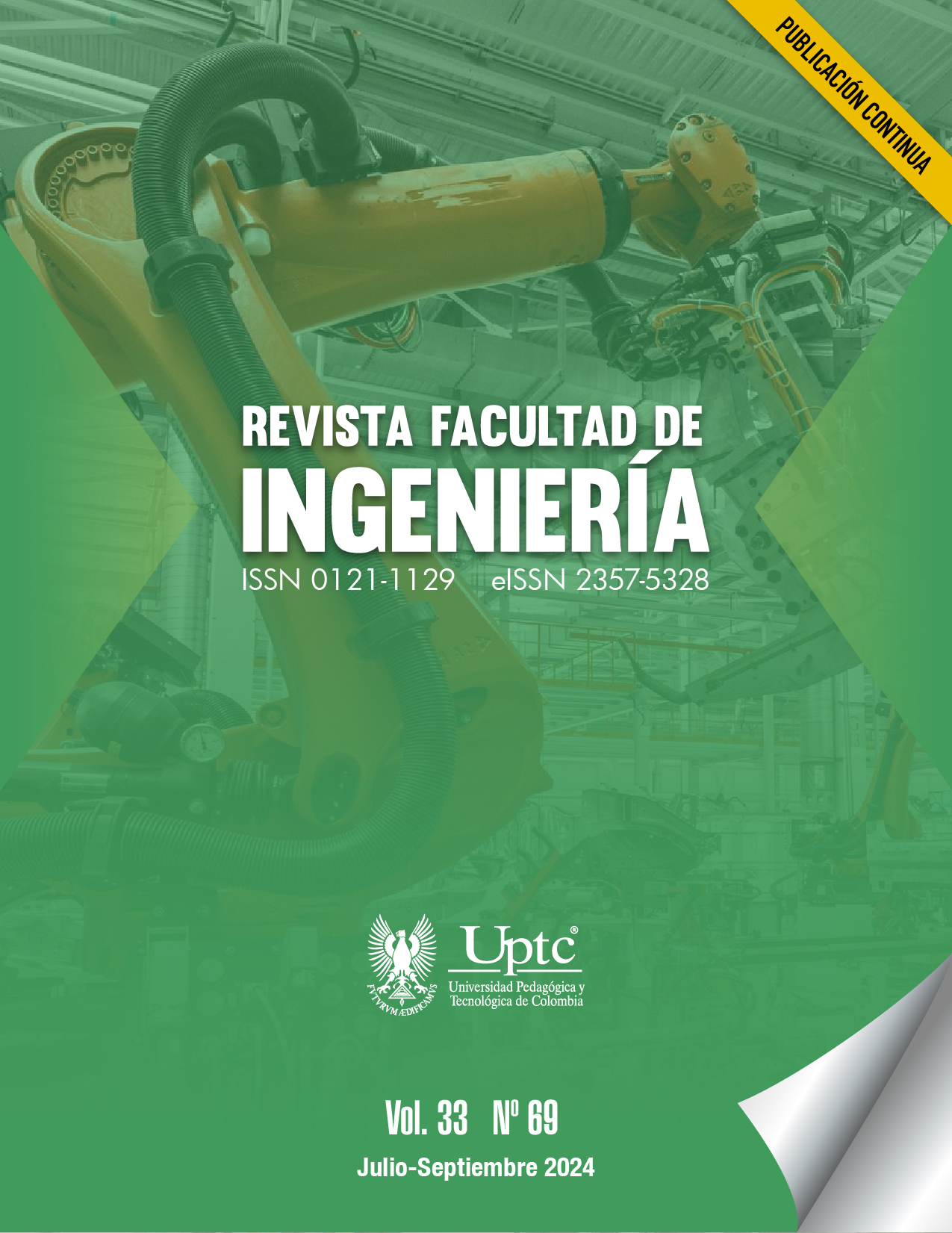Prospective Gas Resources with Emphasis on Wet Gas in Onshore Colombian Basins

Abstract
Colombia is a gas producing country, which has allowed it to maintain a high level of self-sufficiency for the past 40 years, including Natural Gas (NG) and liquefied petroleum gas (LPG) in activities primarily related to residential consumption, industry, and transportation. According to official data from the National Hydrocarbons Agency (ANH by its Spanish acronym), the total gas discovered in Colombia reaches 27 Tcf (Original gas in place - OGIP). The estimation of gas prospective resources in the Colombian onshore basins with commercial hydrocarbon production, where the presence of discovered gas has been concentrated, contributes to guiding exploration and production activities. The selected method to estimate the gas resources was proposed by Zetaware, a leading company in petroleum system modeling, and is called SREPC (Source Rock Expulsion Potential Calculator). In this study, it is used for the first time in Colombia to discriminate prospective resource of oil and total gas. The statistical analysis of the gas composition samples representative of the evaluated basins was used to estimate the amount of wet gas (probable source of LPG) with the parameter C3+ greater than 5%. The gas prospective resource estimation shows an important potential related with the current hydrocarbon production areas; total gas (including dry and wet gas) is close to 39.6 Tcf (Trillion cubic feet) while wet gas is about 21.1 Tcf (approximately 60% of the total resources to be discovered). The largest gas resources are in the Middle Magdalena basin with 10.39 Tcf, the Cordillera basin with 7.54 Tcf, and the Llanos Basin-Foothills Domain with 6.15 Tcf. In terms of prospective wet gas resources, the most promising basins are Middle Magdalena (5.9 Tcf) and Llanos-Foothills Domain (5.9 Tcf).
Keywords
hydrocarbons, gas, liquefied petroleum gas, onshore basins, prospectivity, prospective resources, yet-to-find gas, wet gas
Author Biography
Claudia-Rosa Posada-Saldarriaga
Geóloga. Universidad Nacional de Colombia (Bogotá - Colombia).
César-Augusto Mora-Hernández
Geólogo Universidad Nacional de Colombia, Msc. Universidad Federal Rio de Janeiro (Rio de Janeiro – Brasil).
Gleubis-Belén Silveira-Moreno
Geóloga, Msc. Universidad Pedagógica y Tecnológica de Colombia UPTC
References
- A. L. García, E. E. Galvan, F. Samaniego “Comportamiento termodinámico de los yacimientos de gas seco, gas húmedo y gas y condensado”. Ingenieria Petrolera, vol. 59, no. 1, 2019.
- Gasnova, Informe Anual del GLP, 2021, pp. 1-62. https://www.gasnova.co/informe-anual-delglp-2021
- Departamento Administrativo Nacional de Estadística (DANE), Encuesta Nacional Calidad de Vida (ECV), 2019. https://www.dane.gov.co/index.php/estadisticas-por-tema/salud/calidad-de-vida-ecv/encuesta-nacional-de-calidad-de-vida-ecv-2018
- Agencia Nacional de Hidrocarburos (ANH), Estadísticas de Producción. Producción Fiscalizada Gas y Crudo 2021, 2022 https://www.anh.gov.co/es/operaciones-y-regal%C3%ADas/sistemas-integradosoperaciones/estad%C3%ADsticas-de-producci%C3%B3n/
- UPTC, MINCIENCIAS, ANH, Hábitat Geológico, Prospectividad, Sostenibilidad Socioambiental y Económica del Gas Húmedo (Glp) En Colombia como Combustible de Transición Energética, En Revisión, 2023.
- SPE, Sistema de Gerencia de los Recursos de Petróleo. Society of Petroleum Engineers, 2018.
- J. W. Schmoker, “Volumetric Calculation of Hydrocarbons Generated. The petroleum system-from source to trap,” AAPG Memoir, vol. 60, pp. 323-326, 1994.
- H. Zhiyong, Manual Support Zetaware Inc, 2020. https://www.zetaware.com/
- A. S. Pepper, P. J. Corvi, “Simple Kinetic Models of Petroleum Formation-Part I, Oil and Gas Generation from Kerogen,” Marine and Petroleum Geology, vol. 12, pp. 291-319, 1995. https://doi.org/10.1016/0264-8172(95)98381E
- D. Guan, X. Xu, Z. Li, L. Zheng, C. Tan, Y. Yao, “Hydrocarbon Generation in and Expulsion from Pore Space Limited Source Rocks,” in Theory and Practice of Hydrocarbon Generation within Space-Limited Source Rocks, Singapore, 2017, pp. 69-131.
- X. Luo, L. Zhang, Y. Lei, W. Yang, “Progresses and Problems in the Study of Hydrocarbon Migration Dynamics,” in Dynamics of Hydrocarbon Migration, Singapore, 2023, pp. 1-62.
- J. M. Hunt, Petroleum Geochemistry and Geology, New York, Freeman, 2006.
- G. Damaison, B. J. Huizinga, “Genetic Classification of Petroleum Systems Using Three Factors. The Petroleum System-From Source to Trap,” AAPG Memoir, vol. 60, pp. 73-102, 1994.
- C. Mora, J. F. Osorno, N. Lizarazo, H. Buitrago, Evaluación de los recursos de hidrocarburos remanentes en Colombia (Yet to Find), 2019.
- A. V. Milkov, “Risk tables for less biased and more consistent estimation of probability of geological success (PoS) for segments with conventional oil and gas prospective resources,” Earth-Science Reviews, vol. 150, pp. 453-476, 2015. https://doi.org/10.1016/j.earscirev.2015.08.006
- L. B. Maggon, W. Dow, “The Petroleum System. The Petroleum System-From Source to Trap,” AAPG Memoir, vol. 60, pp. 3-24, 1994.
- ANH, UPTC, Evaluación de la prospectividad del gas en Colombia en las cuencas onshore con producción comercial, Reporte interno a la ANH, 2021.
- UPME, Plan Indicativo de Abastecimiento de Gas Licuado del Petróleo (GLP), 2019. https://www1.upme.gov.co/Hidrocarburos/publicaciones/Plan_GLP.pdf
- T. S. Ahlbrandt, “Future Petroleum Energy Resources of the World,” International Geology Review, vol. 44, no. 12, pp. 1092-1104, 2002. https://doi.org/10.2747/0020-6814.44.12.1092
- C. E. McGlade, “A review of the uncertainties in estimates of global oil resources,” Energy, vol. 47, no. 1, pp. 262-270, 2012. https://doi.org/10.1016/j.energy.2012.07.048
- J. Laherrère, C. H. Hall, R. Bentley, “How much oil remains for the world to produce? Comparing assessment methods, and separating fact from fiction,” Current Research in Environmental Sustainability, vol. 4, e100174, 2022. https://doi.org/10.1016/j.crsust.2022.100174
- C. A. Vargas-Jiménez, “Nuevos aportes a la estimación del potencial de hidrocarburos en Colombia,” Revista de la Academia Colombiana de Ciencias Exactas, Físicas y Naturales, vol. 33, no. 126, pp. 17-29, 2009.
- C. A. Vargas, “Evaluating total Yet-to-Find hydrocarbon volume in Colombia,” Earth Science Research Journal, vol. 16, pp. 1-246, 2012.
- S. Leyva, B. Herrera, A. Cadena, ”Actualización de escenarios de oferta y demanda de hidrocarburos en Colombia,” Revista de Ingeniería, vol. 1, no. 40, pp. 69-80, 2014. https://doi.org/10.16924/revinge.40.10
- L. A. Gutiérrez-Torres, L. D. Molina-Gomez, H. M. Ribón-Barrios, A. Bejarano, T. M. Juliao-Lemus, “Methodology to define hydrocarbon potential in a shale reservoir based on geochemical data and well logs,” CT&F-Ciencia, Tecnología y Futuro, vol. 9, no. 1, pp. 5-14, 2019. https://doi.org/10.29047/01225383.147